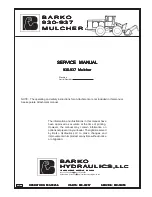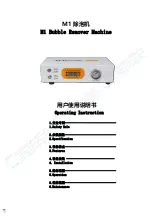
31
6 Maintenance and fault finding
6.1
Maintenance
•
To clean the instrument, use only mild soap solution and rinse with water.
•
Do not use detergents or high pressure washing equipment.
•
At least once a year, check all your connections and apply additional
silicon paste at each connection point.
•
Always use the instrument cover for protection, when not in use.
•
Storing transducers and instruments when not in use for longer periods: It is
advisable to remove the instruments and transducers, and store them inside the
boat or at home in room temperature, if possible.
6.2
Fault finding
Before you contact your FI-30 dealer, and to assist your dealer to give you a better
service, please check the following points and make a list of:
•
All connected instrument and transducers, including their software versions.
•
Nexus Network ID numbers for each instrument (displayed at power up).
6.2.1
General
In most cases, the reason for faults in electronic equipment is to be found in poor
installations. Therefore, always first check that:
•
installation and connection is made per instructions for instrument and transducers,
(see 2.1.3).
•
screw terminals are carefully tightened.
•
no corrosion on any connection points.
•
no loose ends in the wires causing short cuts to adjacent wires.
•
cables for damage, that no cables are squeezed or worn.
•
battery voltage is sufficient, should be at least 10 V DC.
•
the fuse is not blown and the circuit-breaker has not opened.
•
the fuse is of the right type.
•
two instruments do not have the same ID number, (see 3.2).
•
the dampening for course and speed is equally set in all instruments (The
dampening is individually set for each instrument).
6.2.2
Fault - action
1. Compass: No reading [ --- ] or wrong heading.
Check that setting C71 is
according to your installation.
•
Check that the local magnetic variation is properly set C32.
•
Make sure the Autodeviation have been carried out. C33
•
Check for magnetic disturbences.
•
Make sure the transducer is aligned correctly, (see C36, 0).







































